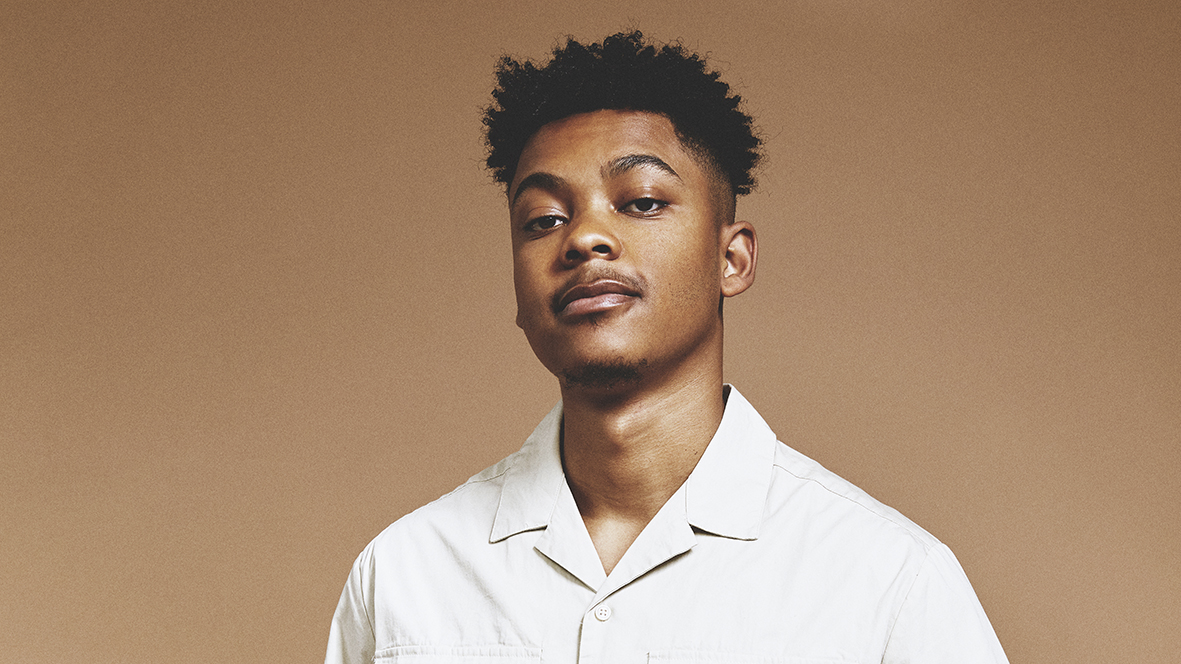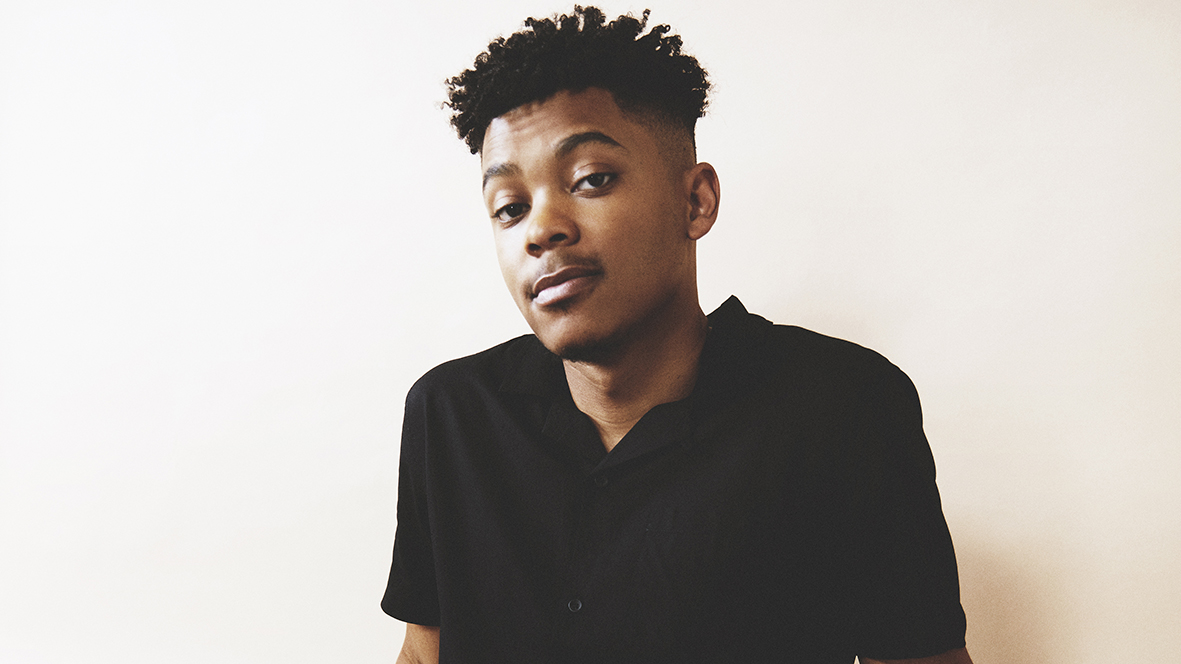Mason Maynard: "Since I started buying hardware a couple of years ago, it has turned into an obsession (which costs a lot)"
Mason Maynard already has the backing of BBC stars and some top production legends, plus a studio packed with the best hardware and software. And it all stems from a school lesson when he was asked to produce on a computer...

With the backing of BBC Radio 1 legends Annie Mac, Pete Tong and Danny Howard and producers like Solardo, Lee Foss, and Richy Ahmed, Manchester-born DJ and producer Mason Maynard is already – at just 21 years of age – one of the rising stars of dance music.
He is, as he states, all about the kick, bass and vocal and while his style is mostly house driven with catchy vocals – just check out Make It Hot (featuring Gene Farris) – he has also produced more breaks-infused tracks like Memory.
Here he explains what it takes to make a great Mason Maynard track and he also reveals his best five plugins and a growing (and expensive) obsession with all things hardware.

Tell us how you got into music.
“I’m a producer and DJ from Manchester and I’ve been interested in making music since around high school, as I had a really good teacher who introduced me to a lot of different genres on top of all the different music I would hear at home. I’ve always had a deep bond with music and found it to be an escape for me in many instances, so I definitely feel as though I owe a lot to it.”
When did you get successful?
“Personally I don’t feel I’ve ‘made it’ but I’m absolutely aware and grateful that my job is literally to make and play records round the world. I do have a lot of ambition and I know the level that I want to be doing this in the years to come. When I put a couple of tunes out in 2017, I’d say things started to move quickly and I was in the fortunate position where bills were being paid from being in the studio and touring.”
Want all the hottest music and gear news, reviews, deals, features and more, direct to your inbox? Sign up here.
Arturia Mini V was one of the first plugins I ever had. I used this in 90% of my music in the beginning
What is your production philosophy?
“I just try to find and make music that has a strong groove; something that forces you to move. I also like to listen to music that has sounds that spark some kind of emotion, as I find that when there’s an emotion attached to a song, it’s more memorable and often helps the listener to understand the story better.”
When did you discover the computer music route to music production?
“This was back in high school. As part of our music lessons we had to make a song on the computer. I’m not musically trained so seeing that there was another way to actually make songs that didn’t require you to play an instrument is probably what appealed to me the most.”
Tell us about the gear in your studio.
“So currently I’ve got a few Roland drum machines (MC-505 , TR-707, TR-8S, TR-909), an Akai MPC2000 and some of the newer Behringer clones (RD-8, Model D, 101), Roland TB-303, Roland Jupiter X and a Moog Sub Phatty.”
What are your favourite plugins?
Roland Cloud 909: “The Roland Cloud is really good as it has the great quality sounds of the classic machines but is completely portable so I used this mostly if I’m away from home and need to get a groove going as it still gives some feel of the hardware.”
Ozone Imager: “This plugin is great for placement of sounds in the mix as it allows you to add width where necessary or, in contrast, you can quickly put a sound in mono that may have been doing too much in stereo. So I love the control it gives.”
Since I started buying hardware a couple of years ago, it has turned into an obsession (which costs a lot)
NI Komplete Kontrol: “This is a super hub of sounds for me with all the great Native Instruments sound banks that live inside. I use this a lot to build on melodies and to audition different instruments when putting ideas together. Also, I use Komplete to fill in spaces with more subtle sounds like pads or sequence FX. Would definitely say this is a must have.”
Arturia Mini V: “I think this was one of the first plugins I ever had. I used this in 90% of my music in the beginning. It has so many classic Moog sounds inside, with all the knobs to allow you to be able to tweak and make the sound your own. The basses are rich and warm before any processing and that’s what drew me to it.
Ableton Amp: “This one comes standard with Ableton but it’s one of my favourites as it makes things feel old and you can really drive it up to get some really out-there tones from different instruments and it’s also good for just adding a little distortion where necessary.”
How do you tend to start a track?
“Sometimes I might have a melody or a sample already in mind that I want to work around, but most of the time I’ll start working on drums and building a strong groove as it’s one of the most important factors in dance music – you’re supposed to be able to dance and move to it!”
How do you know when a track’s done?
“I never really know when a track is finished as most of the time I’m trying to expand and make it as best I can. But for me I feel like they ‘get away’ – I may play them out and if the reaction is good then I can live with letting that one go.”
Do you have any production tricks?
“One thing I tend to do is resample sounds back into different FX units and see what comes out, then chop up and use any bits that may fit with the rest of the idea.”
What would you like to see developed in terms of studio technology?
“I think it’s already happening, to be honest. Nowadays you can collab over the internet and not just sending stems back and forth. There are now plugins and apps that allow you to literally be inside the DAW of the other person while audio plays back in real time in high quality. Pretty crazy.”
What’s on your gear wish list?
“It’s more a case of what isn’t! Since I started buying hardware a couple of years ago, it has turned into an obsession (which costs a lot). In the future I’d like to own a big analogue console like an SSL, API or Neve, so I can really sit and carve out each sound and make everything feel cohesive.”
Which historic track do you wish that you’d produced?
“Myd, The Sun. This is one of my favourite songs – it feels like you’re in a daydream. I love the chord progression and how the notes deviate slightly off key as they’re strummed. I think it makes for a really unique listen.”
Don’t shy away from expressing yourself when making music or just try something new
What about studio advice?
“Don’t shy away from expressing yourself when making music or just try something new, maybe a new genre or incorporating different genre influences into the music you make. Although music is my job, at the end of the day it’s still just a hobby that I’m passionate about and I think it’s important to keep that in mind.”
Any other more general advice?
“I think just to be open minded about meeting different people as there are a lot of different characters from all walks of life. Just be nice to everyone you can, as you’ll attract the good energy back your way.”
What have you got planned?
“I have the new EP on Island Records with the first single having dropped with Gene Farris on the vocals. It is a club bomb and has been getting really great receptions when I’ve been playing it out on tour in America and, more recently, in the UK. I’d tell people to come see me play as I try to incorporate all the different genres that inspire me whilst keeping the energy and groove alive all night!
“In the near future I’ll be launching a new label that I’ll be announcing soon and dropping EPs on there and other big labels that I can’t disclose just yet. Lots of music coming so I’m excited.”
Mason Maynard’s new track, Take Me featuring Shyam P, is out now.


Computer Music magazine is the world’s best selling publication dedicated solely to making great music with your Mac or PC computer. Each issue it brings its lucky readers the best in cutting-edge tutorials, need-to-know, expert software reviews and even all the tools you actually need to make great music today, courtesy of our legendary CM Plugin Suite.
